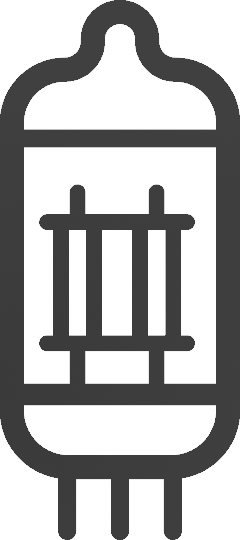Detroit Become Human Cosplay : A Father’s Story
Combining science, engineering and the entrepreneurial spirit has been a perpetual fire inside me. I want everyone, include my own children, to experience a fire of their own. I personally feel that for them to truly love themselves and their work, they need to discover their own path. The path needs to include struggle as that is where real character is formed. The process is non-linear and can seem fraught with many obstacles. However, I think it the only way to live a life that no one else can.
Eli Hughes
June 14, 2024
From Gen X to Gen Z
One of the challenges I had serving the roles of father, engineer, and entrepreneur at Wavenumber was balancing daily life while offering my children exposure engineering and science. Combining science, engineering and the entrepreneurial spirit has been a perpetual fire inside me. I want everyone to experience a fire of their own. My internal deliberation on how to do this funnel down to how to best introduce the spark. It is easy to get mired in technical details and overlook the underlying substance of getting someone hooked. In my 2020 Altium Live presentation, I told a personal story of my path to become a “Full Stack” hardware engineer. My path came through 80’s video games, guitars, and keyboard. My aim was to not impose my own bias on my children. I personally feel that for them to truly love themselves and their work, they need to discover *their own* path. The path needs to include struggle as that is where real character is formed. The process is non-linear and can seem fraught with many obstacles. However, I think it the only way to live a life that no one else can.
When it comes to helping other people get involved in STEAM (Science, Technology, Engineering, Art, Mathematics), the solution is generally simple, just not always easy to do. Understanding the distinction between “simple” and “easy” can be helpful in navigating problems. For example, developing a strength training and exercise regime is simple. Showing up daily for execution of the training is not easy! For engineering, I claim it is not easy to introduce other genders as it involves us engineers (which are a majority male) to empathize with the different components that drives someone else’s curiosity. That often means that we need stop the “mansplaining” and face the fact that in many cases we can turn others off from the joys of science and engineering. In many cases the turn-off begins with making it about “us” and not “them.”
What I have been personally striving for is to always be looking for small opportunities to introduce the spark. As parents, we spend most of our time addressing the mundane and it is easy to overlook “openings” to interject experience on potential career path. I am an imperfect being and an imperfect parent who often makes mistakes. I am not always patient; I do not always listen carefully, and I do not always understand my children. I am a solid “Gen X” trying to parent a “Gen Z.” Our worlds are completely different. I do, however, feel that there is a commonality that has persisted through the generations.
The ideation, design, and execution of interesting projects have always existed and can be a bridge between different generations of people.
I will freely admit my shortcomings as I have plenty. However, I learned early in life that ordinary, imperfect people can achieve extraordinary things. This story is one of a struggle to seize an opportunity and try to balance all the challenges of life to still allow some room for the development of the “spark.” I do want to stress that while I am presenting a project that the appearance of being well planned, the story did not take place in “linear time.”
I want my children to forge their own path for the things that they are passionate about. It does have to be the types of work that interest me and I hope that it is something they are “on fire” for. There is nothing more exciting than creating new things. The excitement of a “new build” is something I wish everyone could experience. To me, the feeling of anticipation and enthusiasm for the new creation is one of the aspects of STEAM that makes it an excellent career path. I always include the “art” portion as moves the discussion of engineering from making life survivable to a joyful life worth living. The art component takes many forms and should never be left from the discussion. Struggle is also an important component as well. There seems to some magic when you combine creativity with struggle. What often emerges is a a product that is greater than the sum of its parts.
I will freely admit my shortcomings as I have plenty. However, I learned early in life that ordinary, imperfect people can achieve extraordinary things. This story is one of a struggle to seize an opportunity and try to balance all the challenges of life to still allow some room for the development of the “spark.” I do want to stress that while I am presenting a project that the appearance of being well planned, the story did not take place in “linear time.”
The Path of Pico
Our culture tends to put the different people in easy-to-understand buckets. One aspect of my youngest child “Pico” (who used to go by ‘Rin’, then 'Ash' and 'Ink'... it is tough for a parent to keep up) is that she has never fit into a well defined “bucket.” As a parent, it is simultaneously interesting and frustrating! From an early age she demonstrated she was a “creator” and there was little boundary to her medium. She always dressed the way she wanted, did artwork on her own terms (I am still finding hidden on obscure walls in the house from days gone by), and otherwise marched to the beat of a different drummer. From an early age she loved the idea of creating her own costumes and doing art. It allowed her to transform into a completely different person and she was always working on something. Now as a teenager, she faces all the mental and physical challenges that accompanies a being that is under constant change. It is difficult to watch, especially during the teenage years! Growing up in the 80’s was much different than in the 2020’s but I hope through the excitement of new projects and new “builds”, she can navigate the difficult waters.
Pico’s stepmom taught English in Japan after college and as a result Pico ended up gaining exposure to the culture. Japanese anime characters were appealing to Pico, and it was not long before she was making her own outfits. Sewing h traditionally taught to females as a practical matter for daily life, but I saw it as another path into design and engineering. The fact she was starting this on her own was a big deal to me.
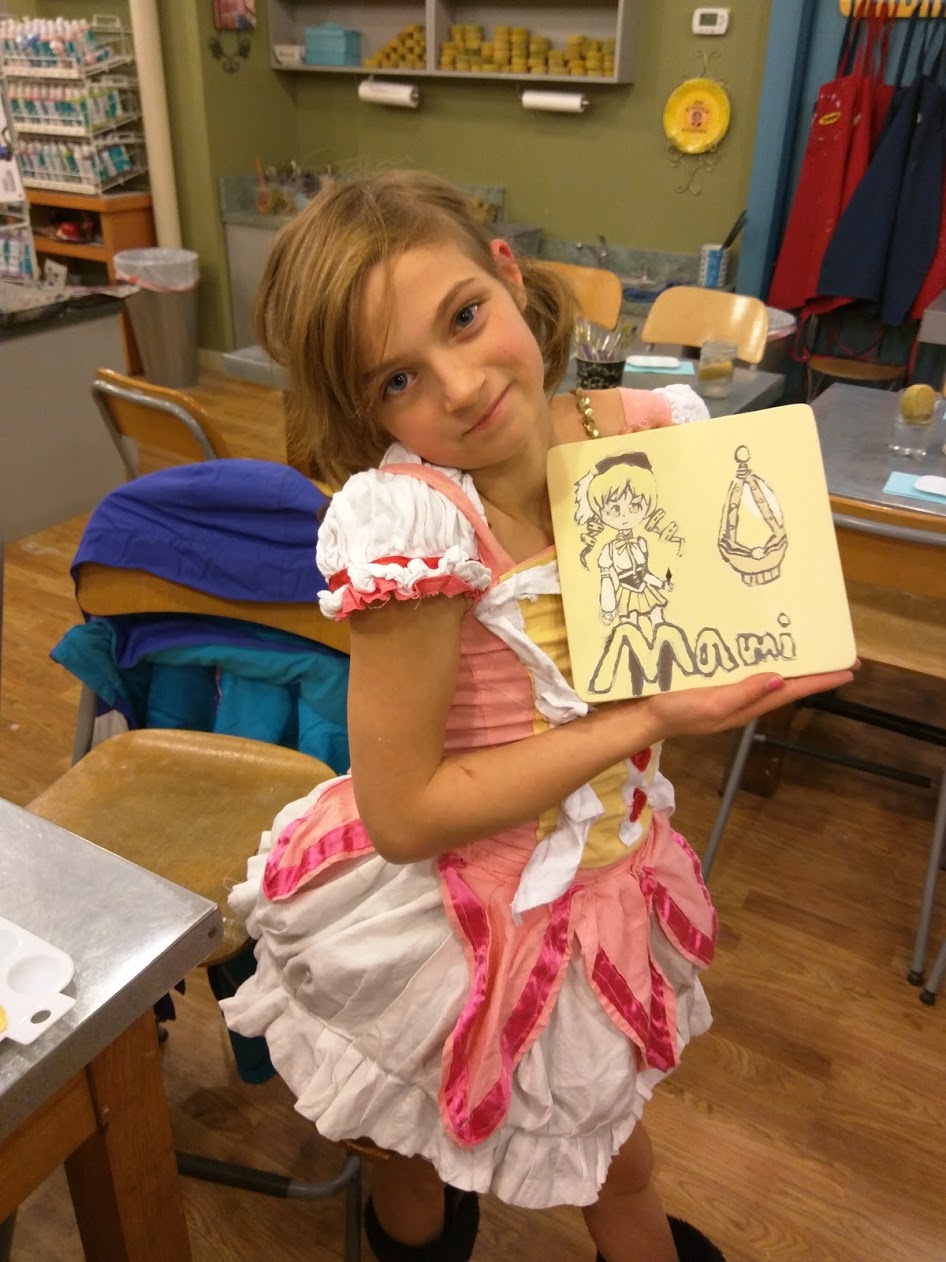
The outfit shown above was one of her first big projects. I remember her spending hours in the bedroom cutting, sewing, gluing, and otherwise creating a mess than any parent would be horrified by. It was not long before I found private sewing lessons that she could develop some of her making skills. To me, this was a great introduction to engineering.
The simple act of conceptualization of a physical product, selecting materials and executing physical assembly are core components of engineering.
Those skills quickly improved and the outfits would get more complicated. I was even able to help with the 3D printed “props”.
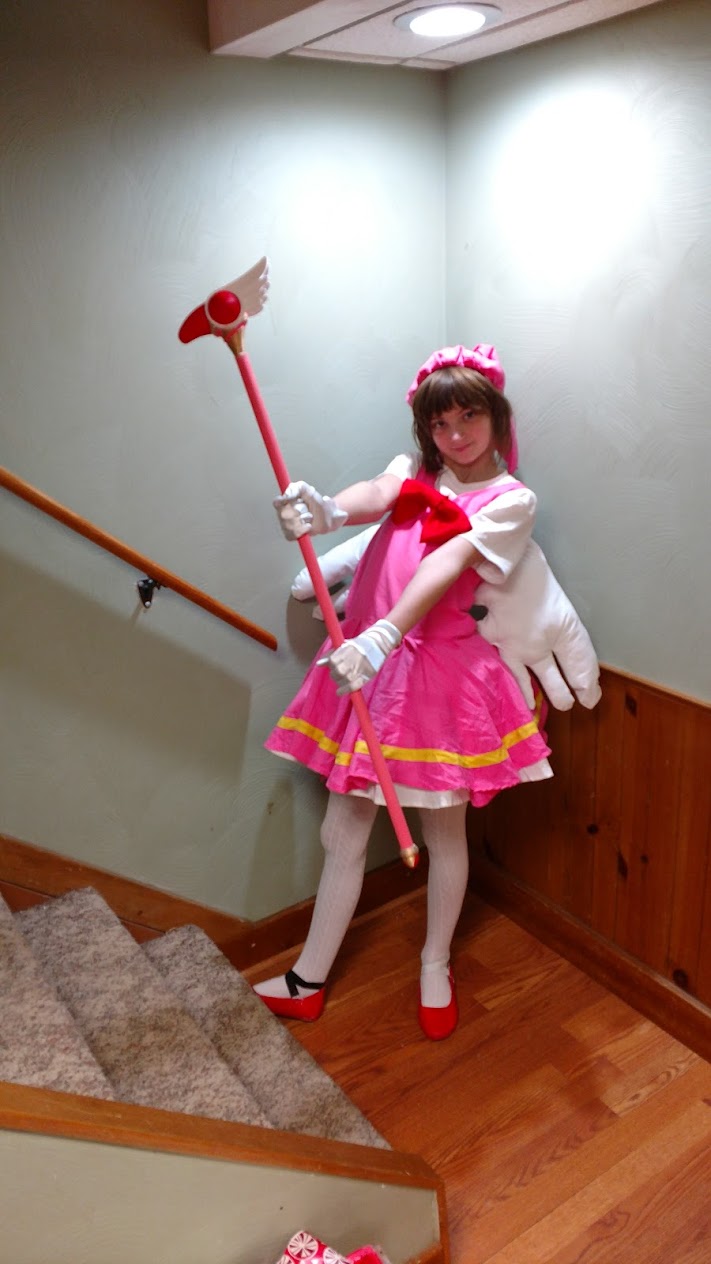
Over the years I attempted to get her exposed to different ways of making “things.” One of my favorites pictures of Pico was at a Makerspace in Pittsburgh.
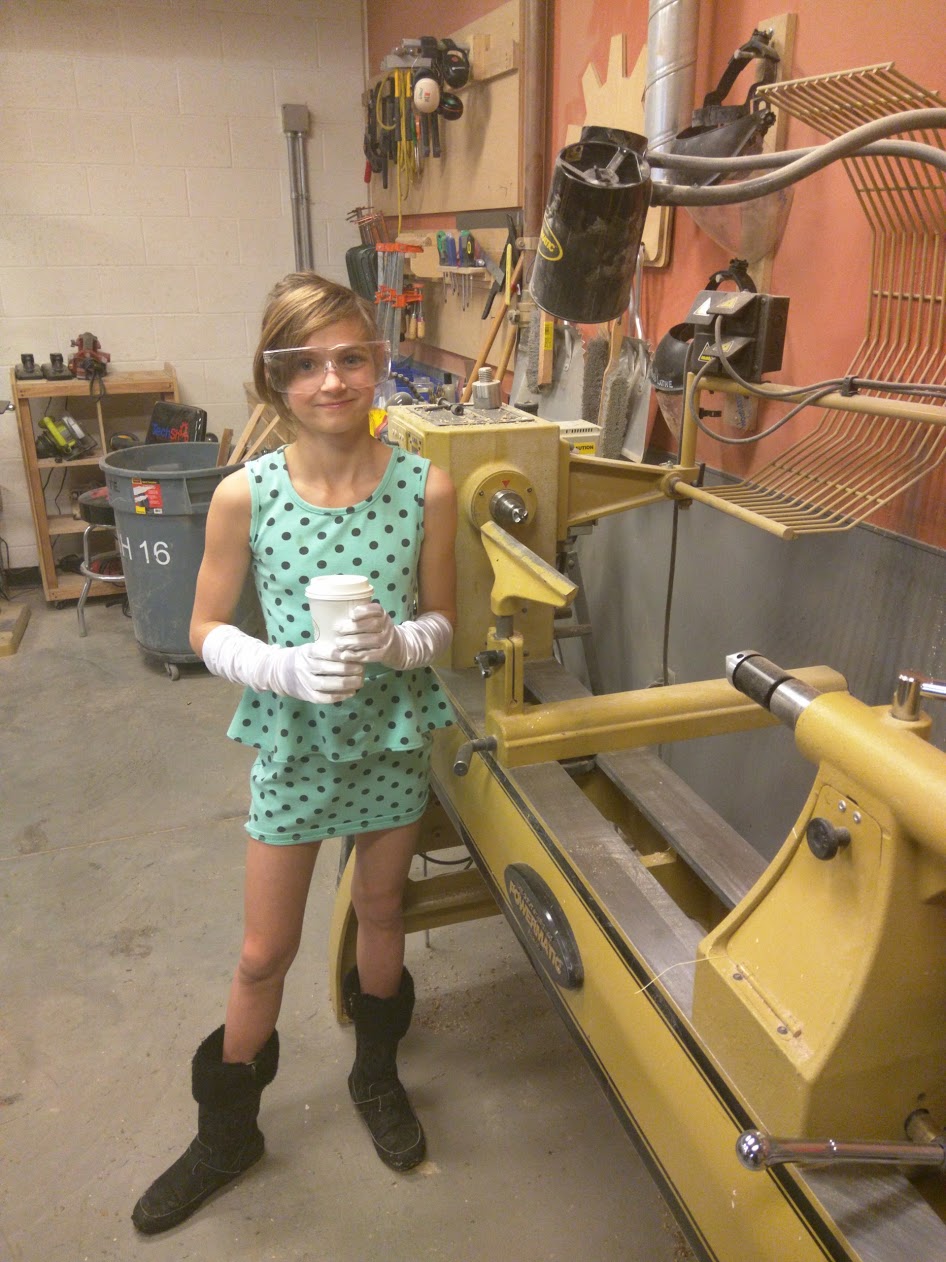
At the time, she was very excited about the lathe. She could tell everyone all about it. For her generation, learning about tools could start with YouTube. Long before starting to train on a real machine, you can get a seemingly infinite amount of prep via freely available instruction videos. It turns out that once Pico was in middle school, she really liked wood shop. There was no shortage of cool projects to use as reference on the internet.
When it was still active, our family would make a yearly trip to World Maker Faire in New York City. World Maker Faire was the ultimate place where kids could be exposed to all things STEAM. In 2016, we had our own exhibit that the family participated in. My wife was able to get a picture of one incredibly special interaction. To this day, I can point to it as a distinct point in time when Pico someone just like her.

Evette (on the left) came to our booth to discuss electronics and sound. Our booth was focused on audio and acoustics, and she was interested in working some audio tech into her props. Pico was absolutely mesmerized by this cosplayer. I want to point out something very important here. Not only was Evette involved in cosplay and art, she also holds a degree in Computer Science.
Paths into engineering and science make look very different from those of us from a “classical” engineering background. Just because the way you did it worked does not mean it will work for someone else.
I got to witness a potential version of my Pico, only 10 to 15 years older. It was such a unique and serendipitous experience. It helped show pico a possibility of what she could become and that this outcome was within her reach. For Pico, she was in a space where there were other people with similar interests and passion. She could be with *her* people. As a dad, I thought it was one of the few things I could offer to bring in a truly diverse set of people and experiences. These are the types of experiences that can lay a foundation of interest that will drive a passion that will drive last a lifetime
The RK800 External Feedback Biocomponent
During the COVID19 pandemic, Pico discovered the video game Detroit Become Human. It is a “choose your own adventure” style experience where the outcomes can drastically change based upon choices you make. These decisions often involve serious moral and ethical dilemmas. Uncovering all the possible “paths” leading to vastly different endings is a key component of Detroit Become Human. In the game, humanity employs sophisticated androids to help with daily life. Like most android fiction, some of the androids develop sentience and begin exhibiting human qualities. This generates a conflict similar to that which humans have faced since the dawn of time. The androids have fans in the “real world” and Pico wanted to cosplay as one of the RK800 androids. One interesting feature of the RK800 is a small LED ring which is an “external feedback biocomponent”.
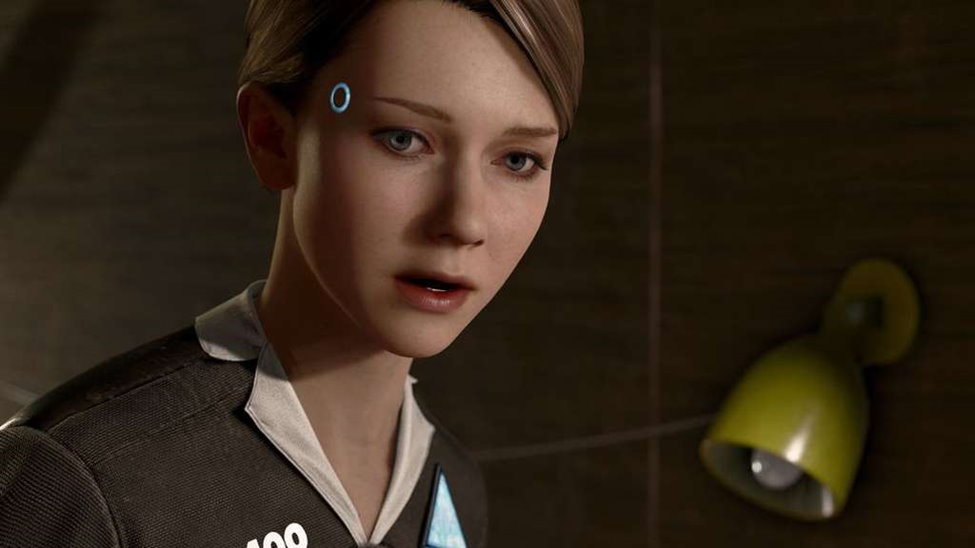
She had asked me for help constructing a prototype that could the meet size requirement, was conformal to the skin and could be “programmable.” I thought this would be an excellent case to introduce some core principles of engineering:
- Learning how to set clear goals (Requirements)
- Learning that it is OK to make mistakes. Make your mistakes early and often learn about your problem. Engineering is incremental. (Iteration)
- Knowing when call a project “done” (Deliverables).
Since Pico had a clear idea of what she wanted, my job was to facilitate without being in the way of her being able self-discover. One thing I am particularly good at is remembering all the electronic parts that cross my path. There were three components in my mental database that I thought would help bring the first prototype to life.
1 : APA102-2020 Smart LEDs
These devices were perfect for creating a ring with enough segments to implement cool visual effects. The APA102-2020 is controlled via a serial daisy chain making the circuit design simpler.
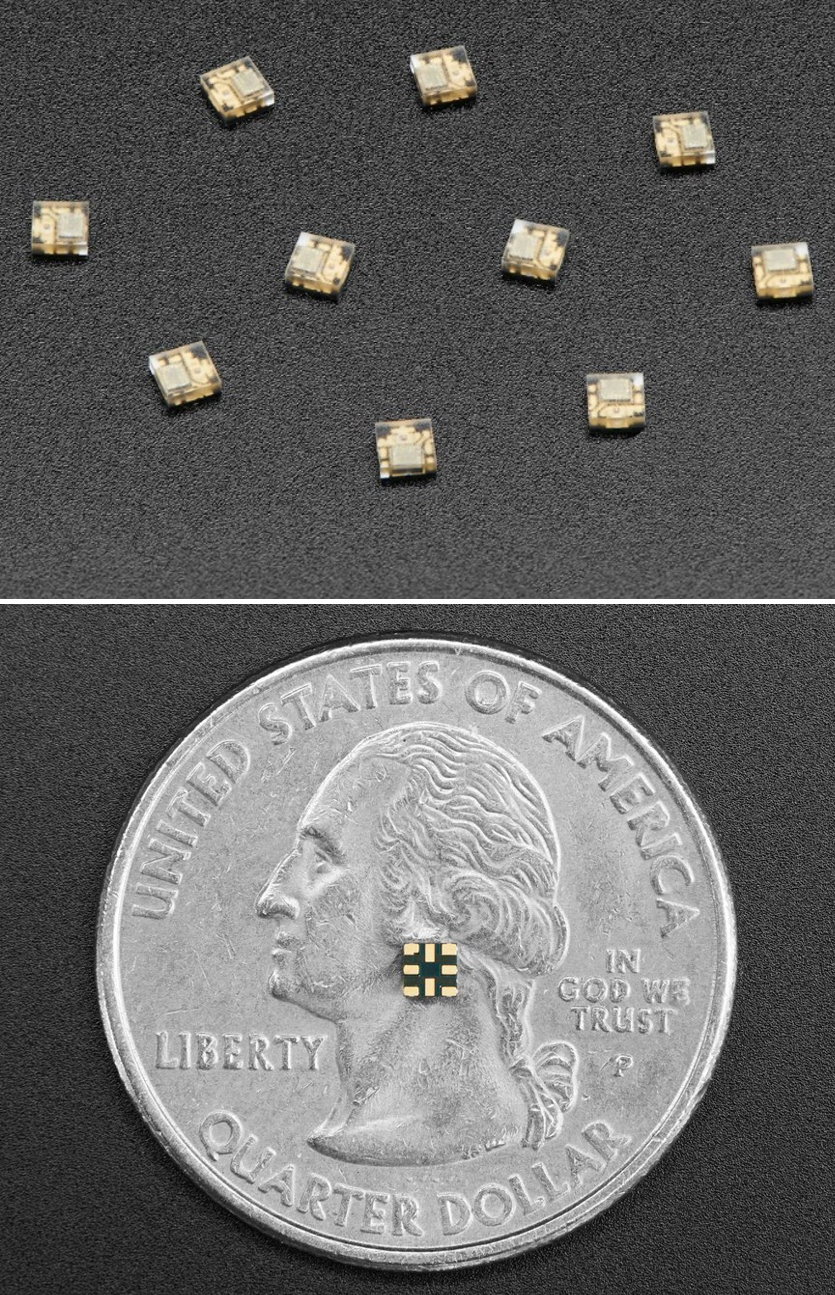
2 : OSH Park Low-Cost Flex Circuits
The low-cost hobby PCB service OSHPark started offering a flex PCB service on a Kapton substrate.
https://docs.oshpark.com/services/flex/
This project was a perfect excuse to give it a try!
3 : Adafruit Circuit Python
As much as I would love to teach embedded C, the reality is that we had lots of other issues to tackle. The goal here was to get a prototype running. Several years ago, the Python Language was ported to run on embedded microcontroller platforms by Damien George.
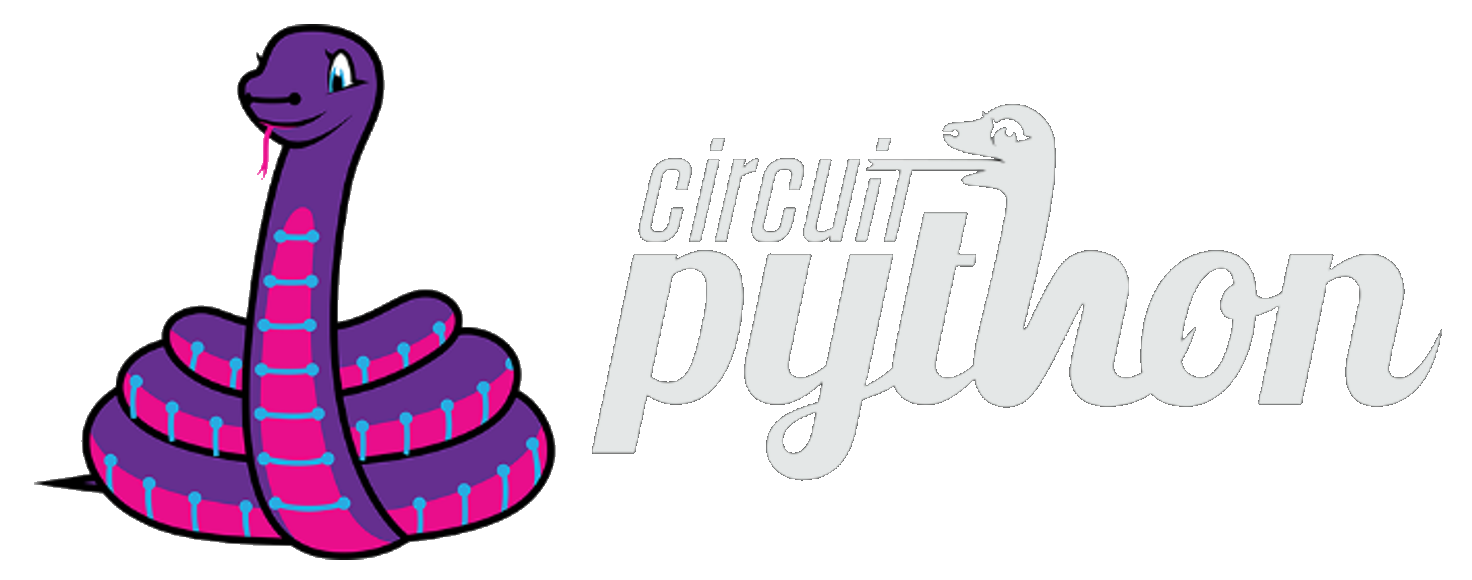
Adafruit extended his micropython project with a host of libraries and project documentation under the name CircuitPython. There is a large selection of microcontroller boards supported by Circuit Python, so it was a great way to get started.
The Build
Males such as myself can overcomplicate engineering and teaching tasks quite quickly. I did not want to spend a great deal of time engineering the world’s best flex circuit with Pico. Getting something running quickly is important. Seeing progress at the outset really helps with lighting the spark. The “Mark 1” prototype was an 825mil diameter ring with twelve of the APA102-2020 LEDs. We chose to simply have solder pads on the bottom side for wire-wrap wire to run to our controller hidden in a pocket. The goal here was to get a ring functional without getting bogged down in a specific connection strategy (which is often the bane of electrical engineers).
An important part of this exercise was to not teach Pico Altium Designer, KiCad or any other software package. The first step is to develop the connection that these tools and processes simply exist.

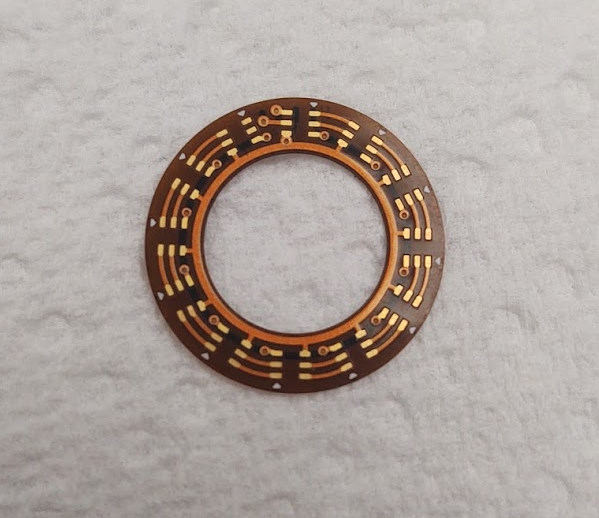
Once the flex circuits were in hand, Pico got to spend time under a microscope applying solder paste. These LEDs are small (2mm x 2mm), and this was excellent practice. After dabbing pads with solder paste, she used the hot air gun to reflow the parts. I thought it would best to do things manually to get a feel for the process before introducing automation.
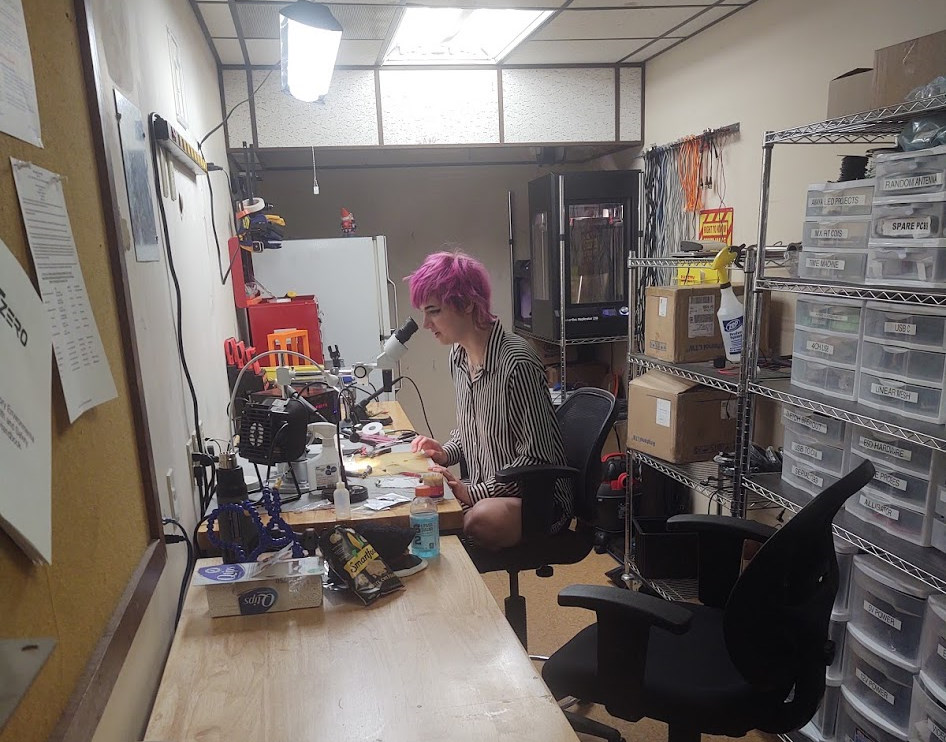
The first version turned out pretty good. Pico did most of the work and I was available for inspection and rework where necessary.
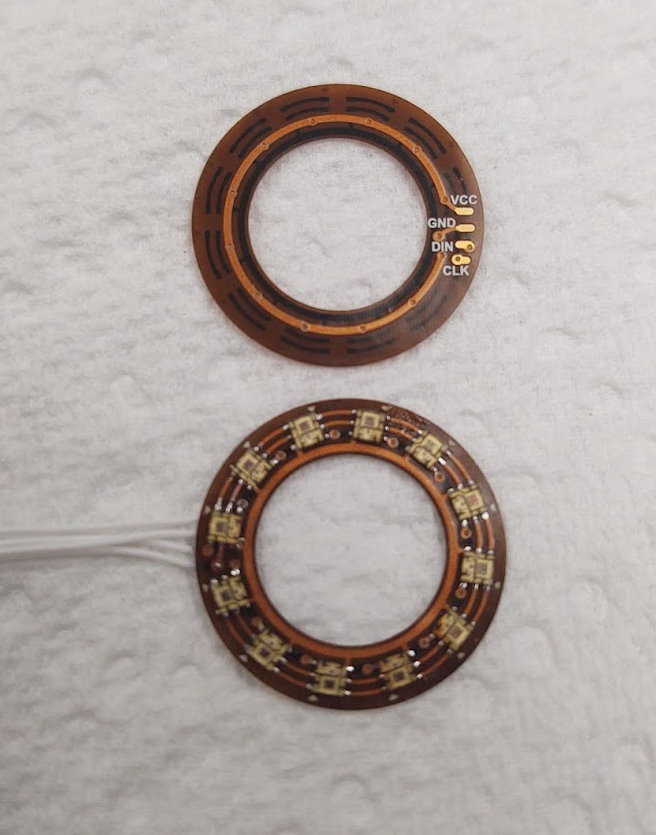
The APA102 LEDs use a clocked serial protocol that shifts data through the daisy chain. Pico wanted to implement some basic colors patterns and effects. This is where CircuitPython and the Adafruit Trinket M0came into play. It is a low-cost microcontroller board programmable with Circuit Python.
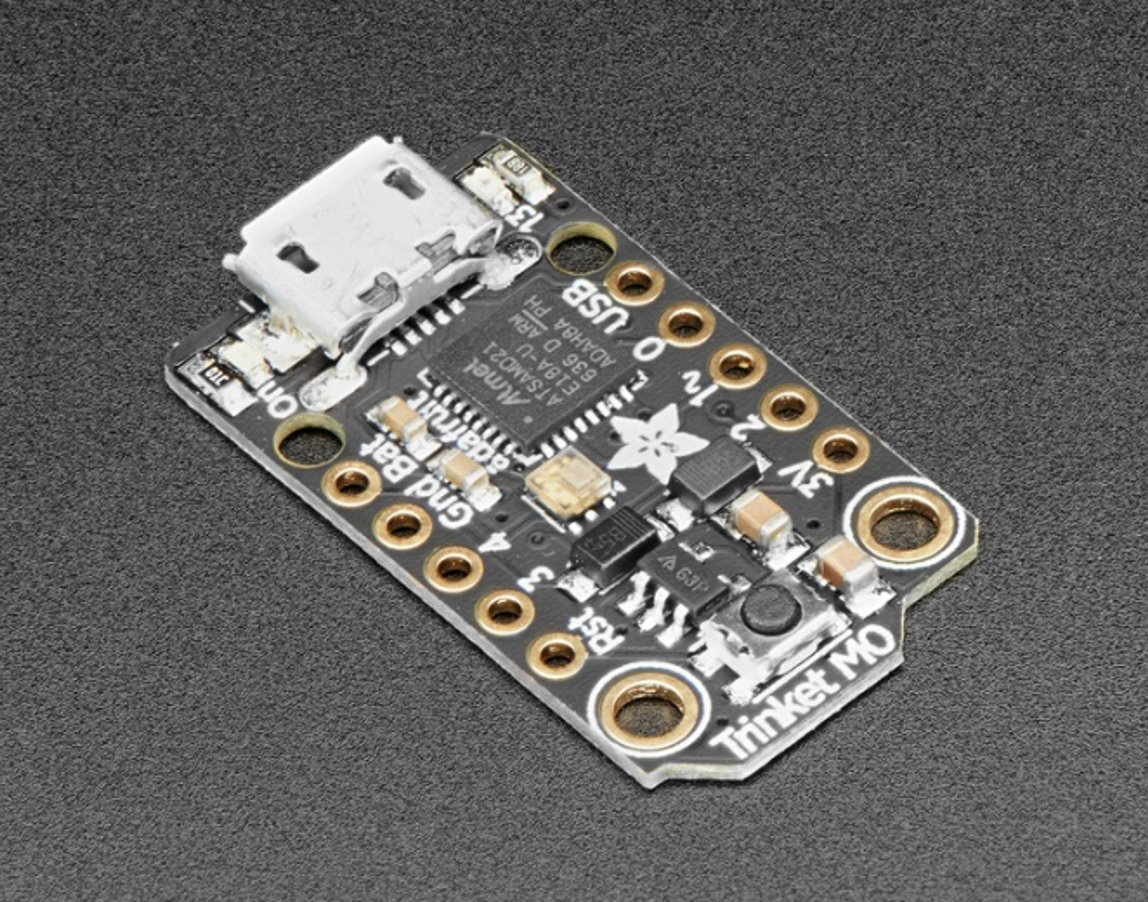
To enable control over the ring, we decided to make a “hat” to breakout power, data, clock, and a few buttons.
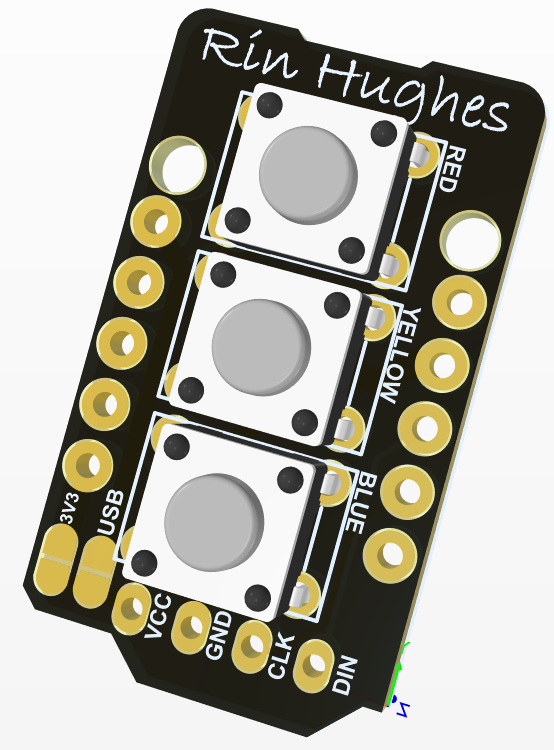
A beautiful part about CircuitPython is that getting started is as simple as opening a text editor. There are no toolchains to install or USB debuggers to fuss with. You simply edit the file and download via a virtual mass storage class interface (i.e. copy a file to a drive). The value proposition of CircuitPython is that there are many libraries and examples to bootstrap your creation without being bogged down in details. I cannot stress how important it is when introducing someone to engineering and technology to *not* overwhelm a newcomer with too many details. From my experience, the best approach is to provide a sandbox with clear boundaries that allows one to discover functionality. Those who get interested will find a way to the intricate details. My programming path began with Apple BASIC. This environment was perfect for discovering what a computer could do without destroying my enthusiasm. As my confidence grew, I learned about the underlying hardware and more advanced programming methodologies (6502 assembly).
For the RK800 biofeedback ring, it did not take long to get things going!
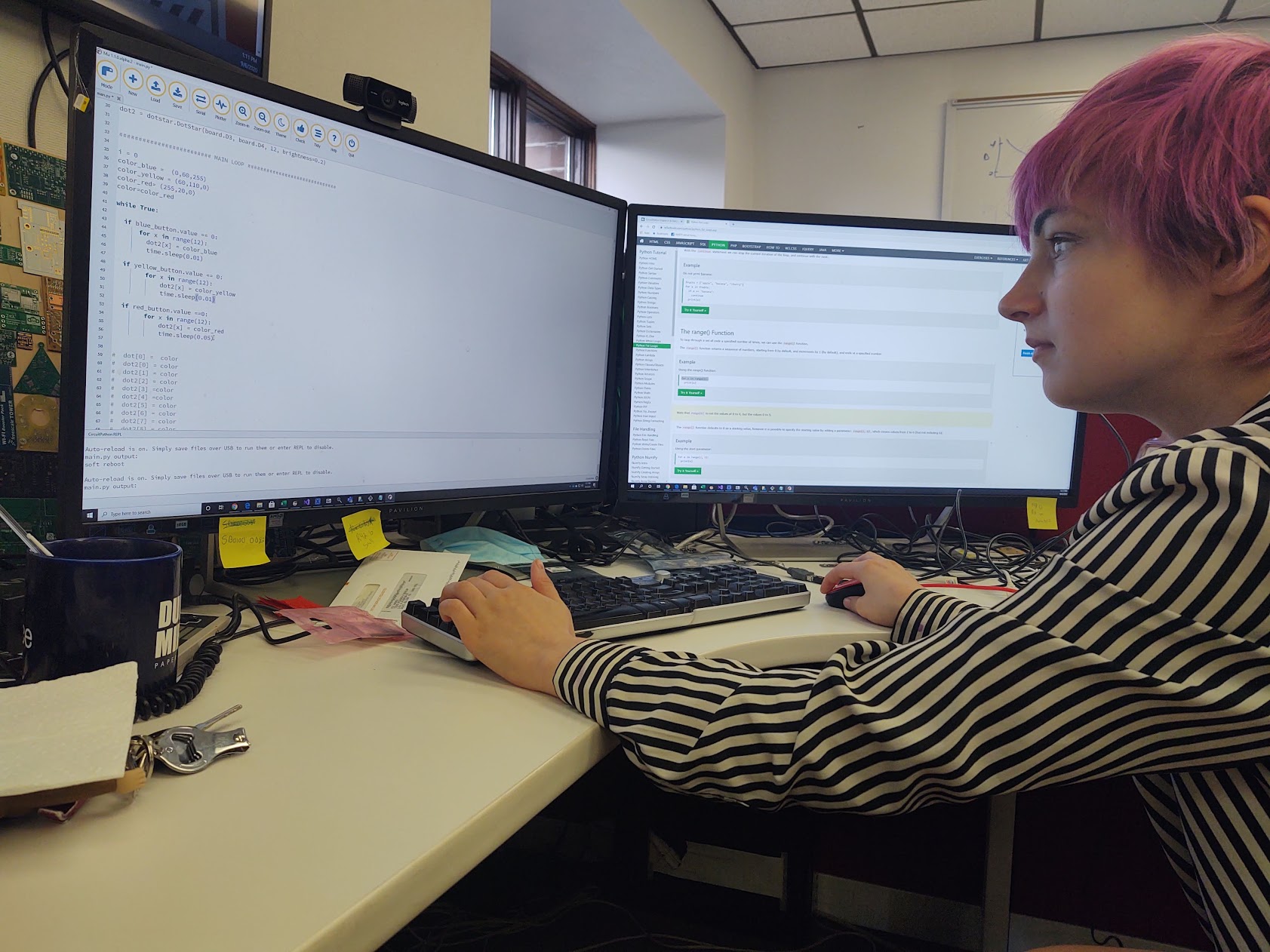
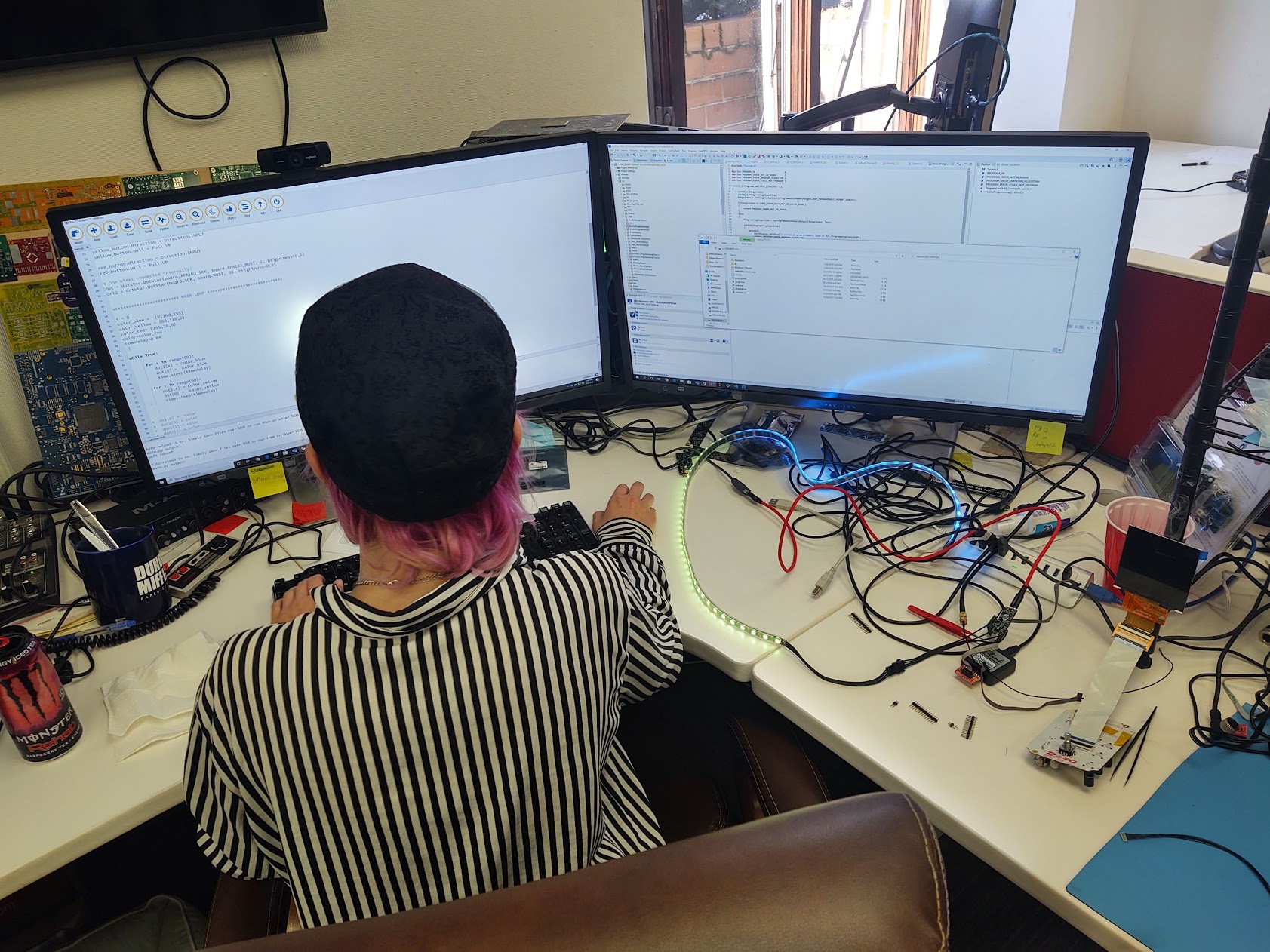
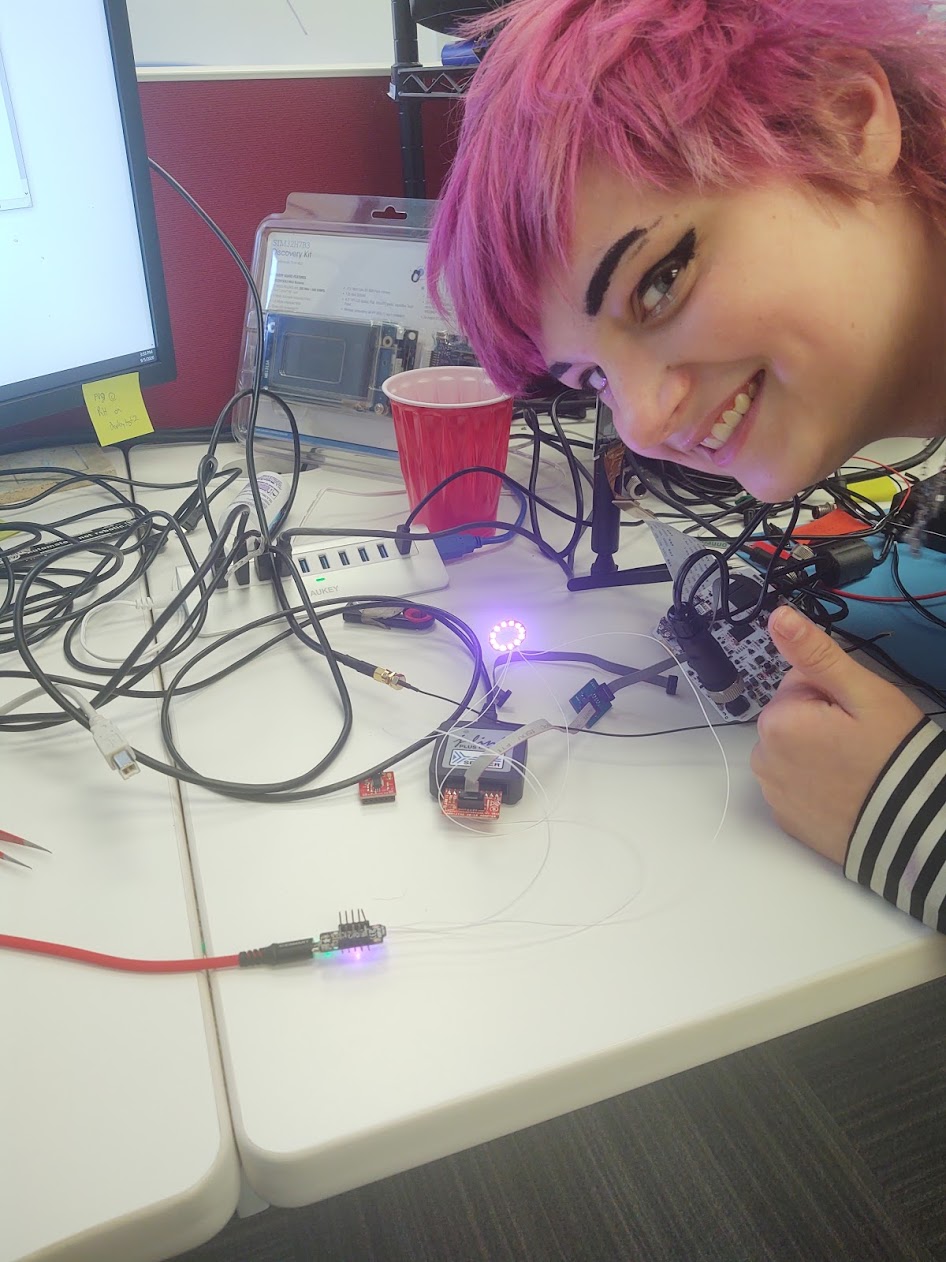
One point feeling that I wanted to communicate to Pico was the joy you experience when you get the “thing” to first come alive. In our case, seeing the ring light up was a magical moment. It was the distinct point in time where the connections between concept, design, physical assembly, and programming were joined together.
The goal is to not teach one all the details. Your job is to help form connections that “prime the pump.”
Not bad for “Rev A”. I am a big believer in iteration and not trying to solve all your problems at once. There were many things we learned during the execution of the first prototype that will inform the next version.
Anyone can cook
Where Pico goes from here is completely up to her. She has always had a strong urge to create. Shortly after the RK800 biofeedback ring project, she decided to learning how to mod the game Friday Night Funkin'.
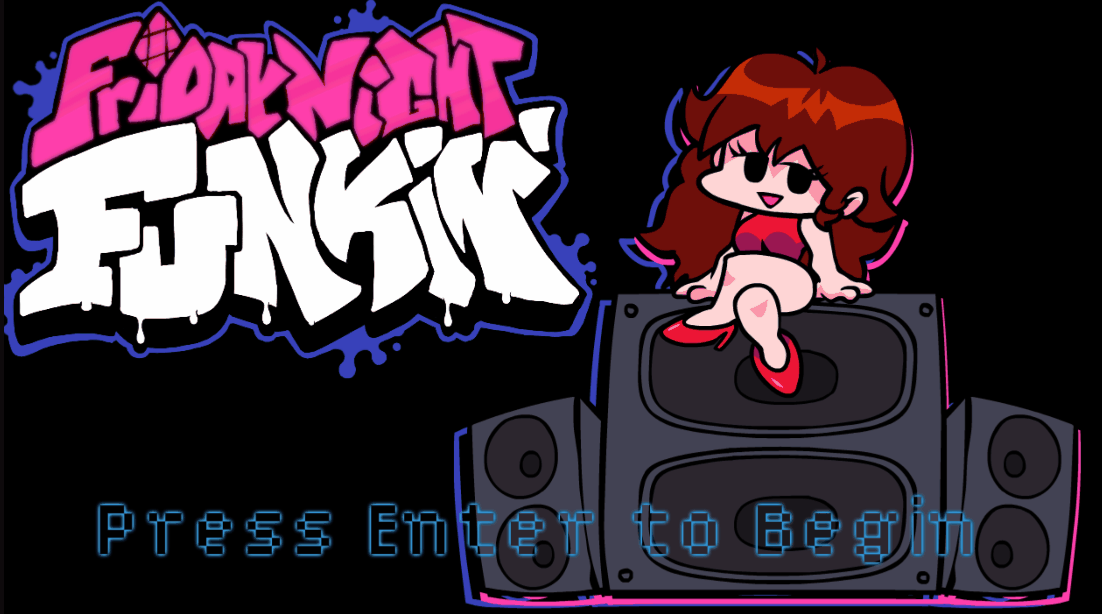
She used her design skills to modify the artwork and animations also well as experimented with source code to change the behavior of the game logic. What a fantastic way to discover a new world of software development! My hope is that I can help facilitate experiences and then get out of the way when it is time for her to use her talents.

I believe this approach to attracting females to STEM is not complicated. We can simply choose to use the position, privilege, and tools we possess to help introduce them to a world of endless discovery. It can be as simple as listening and observing. Consider asking questions like:
“What did you learn from your first project?”
or
“What are your plans for the next version?”
There is no need to explain how you would “do it better” or how “I would have done it differently.” This is very much a male problem, and we need to own it! The conversation should be about them, not you. From there, you can offer advice on incremental improvement or possibilities they may have not considered. This is also be an effective way learning from your student as. That is often an overlooked source of personal growth. Teaching and learning is a bidirectional experience.
I want to leave you with one of my favorite motivational blurbs is from the Pixar Film Ratatouille where Gusteau is explaining that “anyone can cook.” The same value applies to science, art and engineering.
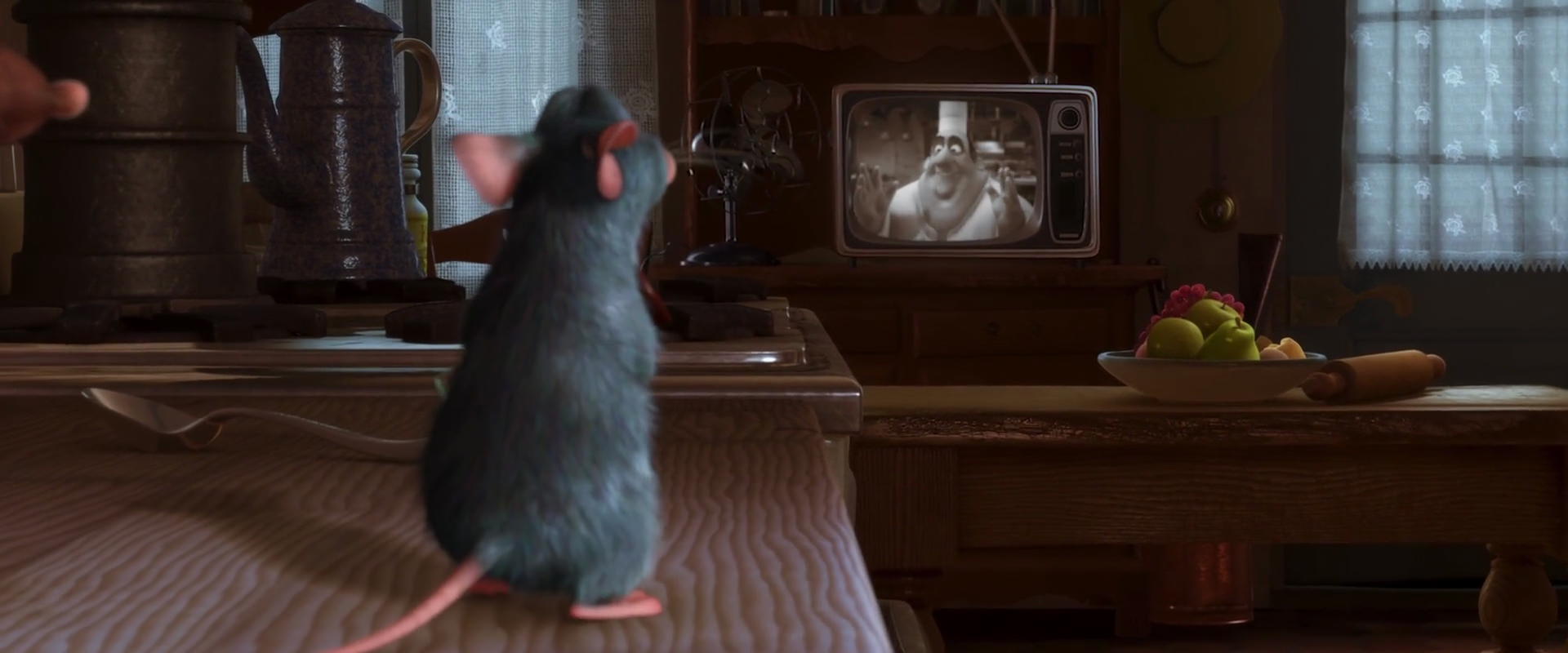
"You must be imaginative, strong-hearted. You must try things that may not work, and you must not let anyone define your limits because of where you come from. Your only limit is your soul. What I say is true - anyone can cook... but only the fearless can be great."

